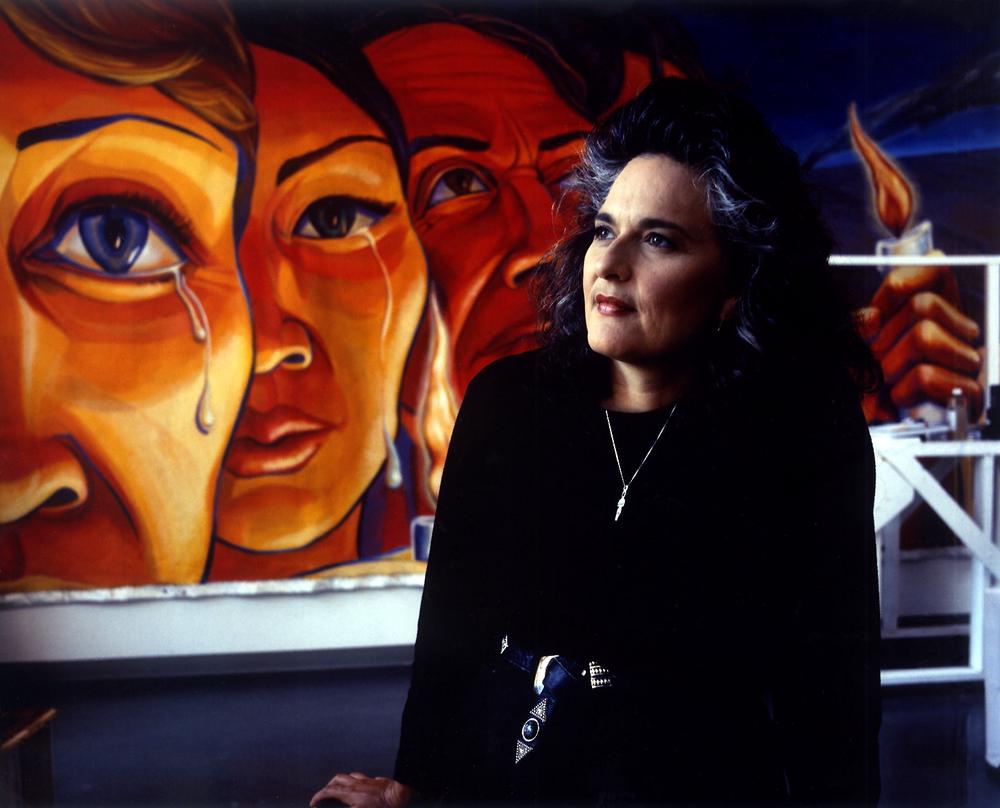Judy Baca. A Bridge Between Two Worlds
Artist and activist Judy Baca was thrust into feminism and El Movimiento—the Chicano civil rights movement—simultaneously.1 In 1970 she lost her job as a teacher at a Catholic high school for her activist work in protest of the Vietnam War and took a teaching artist position with the Los Angeles County Parks and Recreation Department. Assigned to the neighborhood of Boyle Heights, she worked amid a culture of gang violence and became involved in the movement of Chicano activists fighting for social justice. On the other side of the city, Baca had taken an apartment in Venice where her landlord invited her to join a feminist consciousness-raising meeting. “So I began to, for the first time in my life, meet other professional women. . . . I was completely amazed at the possibility of what was available for women,” Baca later recalled.2 She met artist Christina Schlesinger, who collaborated on a mural with her and introduced her to events at the Women’s Building. “The Feminist movement provided me with energy and affirmation that I wasn’t getting within the Chicano movement, that said that I could be a self-determiner, that I could make my own way, that I did not have to follow the traditional roles of females,” explained Baca.3 But it was like “straddling two lives,” as she “was still coming up against extremely traditional thought within El Movimiento.”4 The differences between these movements led Baca (along with Schlesinger and Donna Deitch) to form the Social Public Art Resources Center (SPARC) supporting women in mural production.5
Lynn Hershman Leeson, in an interview with Judy Baca, Catalina Island, CA, October 2, 1992, for Women Art Revolution, video, 49:18 minutes, available at exhibits.stanford.edu/women-art-revolution/catalog/mz831gp6549. ↩︎
Judy Baca, oral history interview with Amalia Mesa-Bains for the Archives of American Art, Smithsonian Institution, recorded August 5–6, 1986, transcript available at aaa.si.edu/collections/interviews/oral-history-interview-judith-baca-5436#transcript. ↩︎
Judy Baca, in an interview with Lynn Hershman Leeson, Catalina Island, CA, October 2, 1992, for Women Art Revolution, video, 49:18 minutes, available at exhibits.stanford.edu/women-art-revolution/catalog/mz831gp6549. ↩︎
Judy Baca, in an interview with Lynn Hershman Leeson, Catalina Island, CA, October 2, 1992, for Women Art Revolution, video, 49:18 minutes, available at exhibits.stanford.edu/women-art-revolution/catalog/mz831gp6549. ↩︎
Amalia Mesa-Bains, “Calafia/Califas: A Brief History of Chicana California,” in Women Art California: Parallels and Intersections 1950–2000, ed. Diana Burgess Fuller and Daniela Salvioni (Berkeley: University of California Press, in association with the San José Museum of Art, 2002), 130. ↩︎
